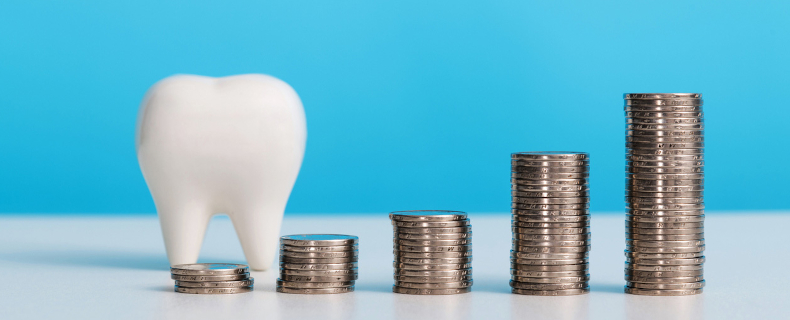
San Francisco and Marin CA
A dental crown is an artificial cap that fits over a tooth and is the same shape and size of the original tooth. Crowns may be needed for a variety of reasons; sometimes, for example, they cover teeth that are stained to the point that they cannot be whitened by more conventional whitening methods. Far more often, they are used to prevent tooth loss, holding together teeth that have been badly damaged or are otherwise in danger of breaking and falling out. They also play a significant role in some methods of replacing teeth that are already missing: they are the visible part of dental implants and are used to strengthen teeth to which a dental bridge is attached.
As extremely useful as crowns are for repairing and restoring teeth, they can be expensive. The cost of crowns varies but typically runs between $500 to $3,000 per crown. That may give some people pause or sticker shock and leave them wondering: Why are crowns so expensive?
Materials
Not all crowns are created equal. Crowns are made from a wide range of materials, each with certain advantages and drawbacks. Temporary crowns are usually made of acrylic and placed on the tooth while a permanent prosthetic tooth is fabricated. Other crowns can be made of:
- Metal
Besides stainless steel, which is usually only used in pediatric dentistry to protect baby teeth, the metals used in adult crowns are typically gold, platinum, nickel-chromium, or cobalt-chromium alloys.
Metal crowns are usually the least expensive and most durable. This is worth noting; given enough time, most crowns will need to be replaced. The lifespan of a crown is between 5 and 15 years, with metal at the higher end of that range. The drawback to metal is largely its appearance, as a gold crown cannot pass for a natural tooth. For this reason, metal crowns are often relegated to the back of the mouth.
- Porcelain
Porcelain crowns are more likely to resemble natural teeth and are therefore far more suitable for the front of the mouth. Furthermore, they are a much better option for people with metal allergies. Porcelain crowns, however, are more expensive and less durable than metal. They are not ideal for people who grind their teeth, and they can wear the teeth opposite them when they come into contact while chewing.
- Porcelain fused to metal (PFM)
PFM crowns feature a metal interior that is topped by porcelain. In a sense, they are the best of both worlds, with the strength of metal and the natural beauty of porcelain. Interestingly, they can be cheaper than metal crowns (if the crown is made of gold) and all-porcelain crowns. Their durability makes them ideal for back teeth and for strengthening the teeth to which bridges are attached. PFMs, however, can show metal lines at the gum, which can be unappealing. They carry the same metal-allergy risks that metal crowns do, and, like porcelain, they can cause wear on the teeth opposite them.
- Zirconium Dioxide
Zirconium is gaining in popularity as a crown material. Long lasting and durable – and with much of the same visual appeal as porcelain – they carry no risk of allergic reactions. While they are more durable than porcelain, however, they are more expensive than metal or PFM crowns. Furthermore, because of their strength, they can wear out opposite teeth even faster than porcelain, and they are not as translucent as natural teeth.
- Lithium Disilicate glass (E. Max.)
Like Zirconium dioxide, promising results have recently come from crowns made from Lithium disilicate glass, often referred to as E. Max. Like Zirconium, however, E. Max is more expensive than porcelain, metal, and PFM, and while it is more translucent, this limits its use to correct badly stained teeth. Also, results have not been as good for E. Max on back-teeth crowns.
Fabrication
Materials are not the only cost involved in crowns. They also have to be fabricated. This often involves the dentist making a mold of the tooth (and the nearby teeth), which is then sent to a laboratory. The cost of a crown includes the dental impression and the crown’s fabrication.
Some dentists have the technology to create crowns in their offices. Using computer-assisted models and 3-D printing, zirconium and porcelain crowns can be fashioned in-house. While this can save time and spare a patient from having to make multiple appointments, the technology is not available everywhere, and the materials, alone, make these crowns expensive.
Multiple appointments
Even when crowns are not part of other, often costly, dental operations – such as the creation of implants, the fashioning of a bridge, or root canals – their installation still requires a time-intensive process. In addition to creating the impression for the crown, the dentist must prepare the tooth for the crown’s application. This involves reshaping the tooth to make sure the crown has room to fit, taking x-rays, and applying an anesthetic. If the dentist does not have the technology for in-office crown creation, the affected tooth will need a temporary crown, and the patient will have to return for the finished crown.
Costs of crowns
For all these reasons, crowns are not the least expensive of dental procedures. Further advances in computer technology may eventually change this, but for the time being, crowns remain a relatively expensive – but worthwhile – investment in oneself.
Dental Crowns in Marin and San Francisco, California
If you are interested in finding out the best treatment for you, contact our Marin dental office that offers dental implants. Please call Glen Park Dental at (415) 799-3900 or contact us online to schedule a consultation today.


